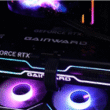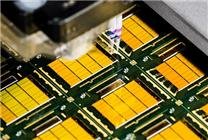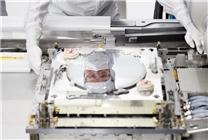Summary
- Rising DRAM Prices: Significant increases in PC DRAM prices are expected in Q4 2025, driven by a shift towards server production by major DRAM manufacturers.
- Market Influence: Demand from cloud service providers is accelerating the need for server DRAM, negatively impacting the supply for consumer markets.
- Future Trends: The focus on advanced memory types like HBM4 could further limit supplies for PC and mobile DRAM in the near future.
In a recent analysis from TrendForce, a pivotal shift in the semiconductor landscape is projected for the fourth quarter of 2025, particularly affecting the PC DRAM market. Major players in the industry, namely Samsung, SK Hynix, and Micron, are increasingly directing their production capabilities towards server-driven technologies, specifically DDR5 and High Bandwidth Memory (HBM). This strategic maneuver is largely fueled by the burgeoning demand from cloud computing service providers (CSPs), which has necessitated a rapid expansion in server infrastructure.
Industry Shift
As CSPs ramp up their server deployments, the need for server-specific DRAM solutions becomes paramount. This shift has led to a significant reduction in the availability of DRAM for traditional PC and mobile devices. According to TrendForce’s projections, traditional DRAM prices are anticipated to increase by 8% to 13% month-over-month, while including HBM could escalate this hike to between 13% and 18%.
The weakening demand within the PC market is contributing to this price elevation. OEMs have consequently diminished their DRAM procurement efforts, underlining a pivot towards server-grade memory solutions. As a result, the focus on PC DDR4 and DDR5 memory appears to be waning.
Future Perspectives
Looking ahead, uncertainties prevail regarding the supply dynamics. There’s speculation that in early 2026, manufacturers may shift their attentions once more, this time favoring the production of HBM4 over DDR5. Such a change could further constrain the supply of chips meant for PCs, leaving consumers and manufacturers alike grappling with the consequences of limited availability.
The repercussions of this supply imbalance extend beyond the PC DRAM market. The mobile DRAM segment, too, is poised for a significant impact. Analysts predict that prices for LPDDR4X and LPDDR5X could experience notable increases, with LPDDR4X alone expected to rise by 10% month-on-month in the fourth quarter of 2025. The specific trajectory for LPDDR5X remains less defined, adding another layer of complexity to the market.
Graphics Memory Market Implications
Furthermore, the ongoing supply chain issues are set to influence the graphics memory market. Current-generation graphics cards, such as Nvidia’s RTX 6000 and the forthcoming RTX 50 series, utilize GDDR7 memory, while AMD’s recent offerings continue with GDDR6. The demand for GDDR6 is particularly strained, which is anticipated to result in steeper price increases compared to GDDR7.
Conclusion
The implications of these trends are manifold, affecting a wide range of consumer electronics and enterprise solutions. As major semiconductor manufacturers prioritize server memory production in response to burgeoning demand, consumers may need to prepare for heightened costs across various DRAM-dependent devices.
This evolving landscape underscores the importance of remaining attuned to supply chain developments and technological advancements within the DRAM market, as these factors will undoubtedly shape the industry’s trajectory in the near future.








